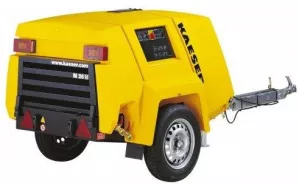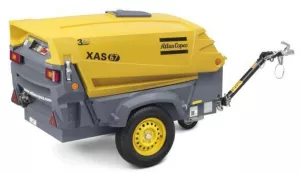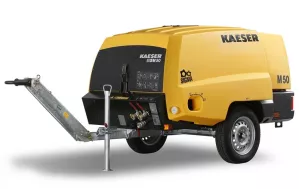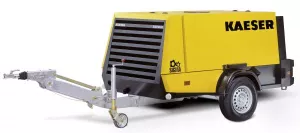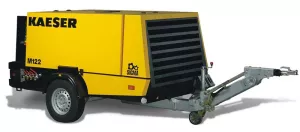How do I choose the right petrol compressor for construction work?
Choosing the right petrol compressor is crucial to the efficiency of your work on site. Whether you need it to inflate tyres, power pneumatic tools or paint, petrol compressors offer mobility, high power and independence from electricity sources. In this article, we will suggest what to look for when choosing a compressor to best suit your construction needs.
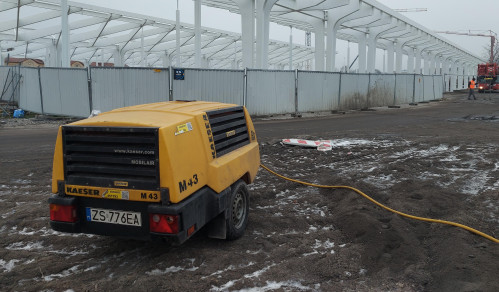
Determination of capacity requirements
One of the most important criteria when choosing a diesel compressor is its capacity. The capacity of a compressor defines the amount of air the machine is able to deliver in one minute (expressed in m³/min). Depending on the construction work to be carried out, choosing the right compressor is crucial to ensure efficiency and continuity of work.
- 2 m³/min compressors - ideal for smaller tasks such as inflating tyres, minor work with air tools (e.g. hammers, drills) or painting small areas.
- 3.8 m³/min compressors - more versatile, suitable for medium-sized construction jobs such as powering several pneumatic tools at the same time or painting larger areas.
- 5.3 m³/min compressors - suitable for more intensive work, such as powering pneumatic tools requiring higher pressure and airflow. Ideal for medium-sized construction sites or field work.
- 7.6 m³/min and 10 m³/min compressors - suitable for large construction projects where large volumes of air are needed, e.g. powering multiple pneumatic tools simultaneously or painting large areas. Compressors with this capacity are ideal for demanding conditions such as large construction sites.
Choosing the right engine power
Another factor to pay attention to is the power of the compressor motor. The power of the engine directly affects the efficiency and running time of the machine. At Ramirent, the diesel compressors available for hire, with capacities from 2 m³/min to 10 m³/min, have power outputs ranging from 17 to 105 kW.
- The lower-capacity compressors (2-3.8 m³/min) have engines with a power output of around 17-32 kW, which is sufficient to power tools that require lower air flow.
- The medium and high-capacity compressors (5.3-10 m³/min) will have more powerful motors, that is, in the range of 32.5 to 105 kW, allowing them to work in more difficult conditions and under heavier loads.
Tank capacity
Tank capacity is another important feature to consider when choosing a petrol compressor. The larger the tank, the longer the unit will be able to run without having to refill it. For construction work where air capacity is crucial, it is worth considering compressors with suitably large tanks.
- Small compressors (2-3.8 m³/min) - equipped with 30-80 litre tanks, which is sufficient for less intensive work.
- Medium compressors (5.3 m³/min) - have tanks with a capacity of 45-105 litres, which allows for prolonged work with larger tools.
- Large compressors (7.6 m³/min, 10 m³/min) - have tanks with a capacity of 87-175 litres, making them able to meet the needs of larger construction sites and intensive work with pneumatic tools.
Choosing the right petrol compressor for construction work depends primarily on the planned scope of work, air output, engine power, tank capacity. Compressors with a capacity of 2-3 m³/min will be sufficient for smaller jobs, such as inflating tyres or painting, while models with a capacity of 5.3 m³/min and above will be suitable for more demanding tasks, powering pneumatic tools on large construction sites.
Want to find out more about the terms and conditions for renting a petrol compressor? Contact Ramirent construction equipment rental in Wrocław, 33-35 Karmelkowa Street!
